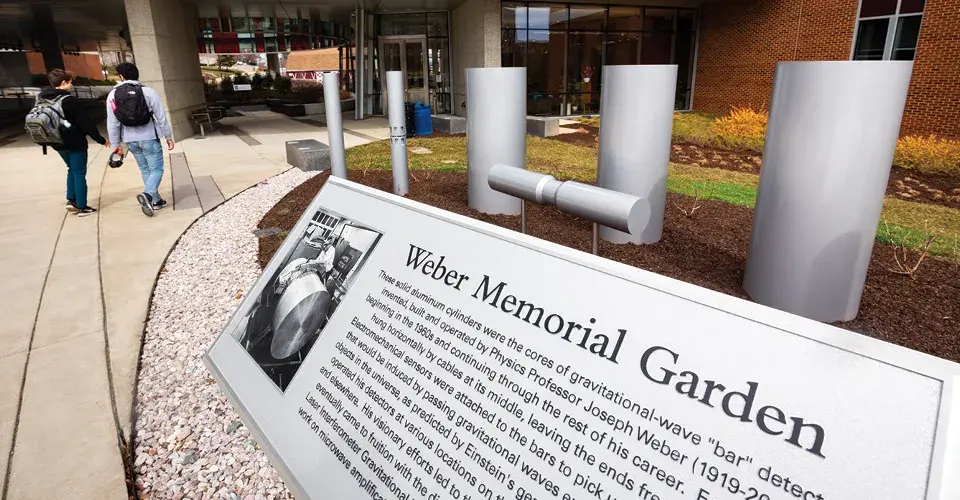Gravity’s Garden
Detector Display Honors Pioneering Physicist
by Chris Carroll | Weber Garden photo by Stephanie S. Cordle; Weber headshot courtesy of University ArchivesA longtime physics professor who laid the groundwork for the discovery of gravitational waves now has a permanent memorial on campus: a garden with 3,000-pound aluminum bars he used to search for these fluctuations in space-time.
Joseph Weber failed in his personal quest, but without his pioneering work, the Laser Interferometer Gravitational-Wave Observatory (LIGO) project wouldn’t have gotten off the ground, project leaders say. It detected gravitational waves from colliding black holes in 2015—resulting in a Nobel Prize in physics a century after Albert Einstein first predicted them.
“Before Weber, I don’t think anyone had ever spent more than 10 minutes trying to understand how to detect gravitational waves in the lab,” says gravitational theorist Charles Misner, an emeritus professor of physics and Weber collaborator.
Weber also helped build up the UMD physics department, attracting students excited by his research, said Lorraine DeSalvo, physics facilities director. After he died, out of respect for his brilliance and single-mindedness, she was determined to save part of his legacy. In 2005, former College of Computer, Mathematical, and Natural Sciences dean Steve Halperin suggested creating a display featuring a “Weber bar,” and DeSalvo countered with an idea for something a little more welcoming.
The Weber Memorial Garden was finally dedicated in March outside the Physical Sciences Complex. “This man was so persistent, and he really left a mark on science,” she says.
Read more about Professor Joseph Weber's groundbreaking research in Terp's Fall 2016 issue.
0 Comments
Leave a Reply
* indicates a required field

